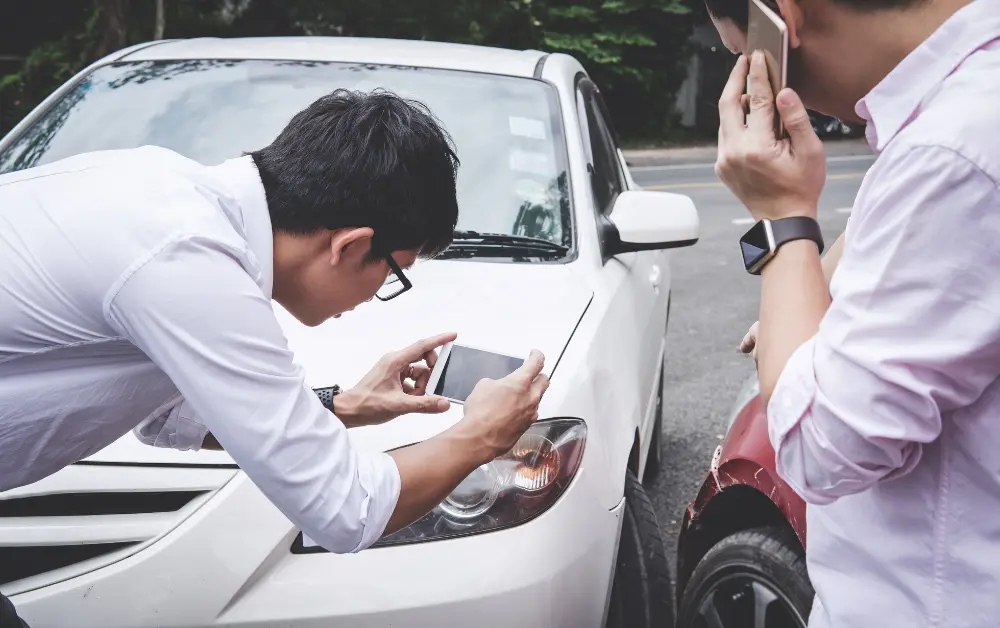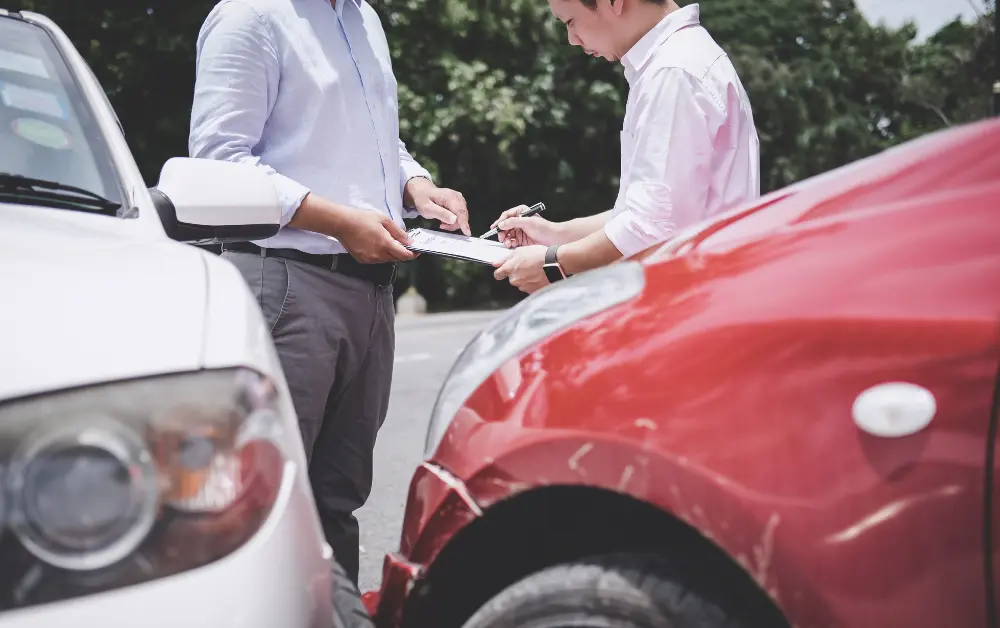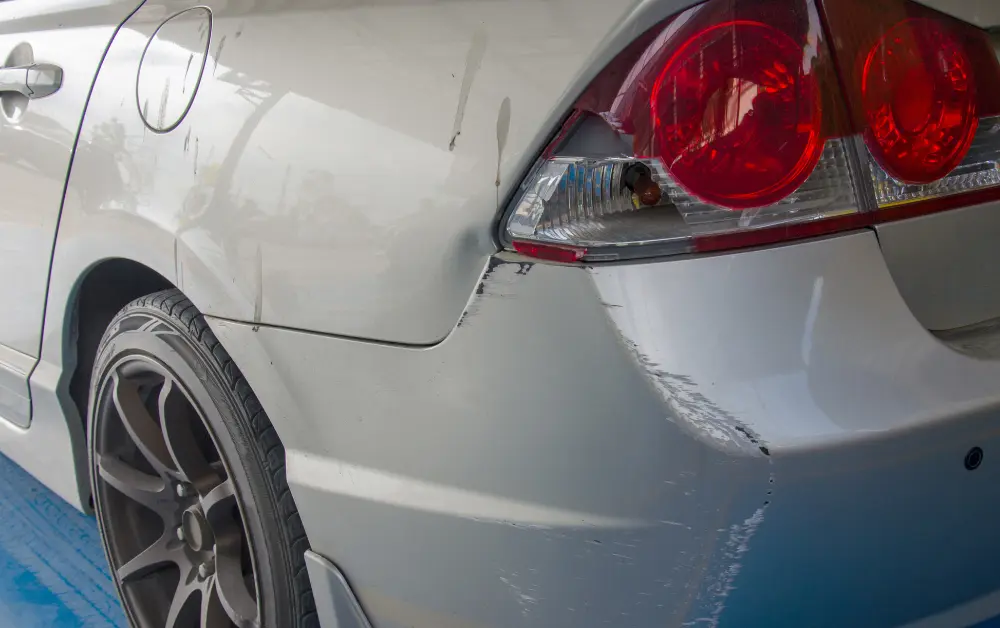Everyday Cars collision occurs around the world. There can be consequences and financial liability according to your local law. To find the Guilty, transfer of paint often comes into the discussion in car accidents. So Does Paint Transfer Happen To Both Cars?
Yes, Paint transfer happens to both cars when they come in contact, but the severity of its effects can vary greatly depending on many factors like speed and angle of collision.
In this blog post, we’ll discuss how to transfer of paint occurs in a car accident occurs. And how to know how to hit who?
Does Paint Transfer Happen To Both Cars?
- When car accident happened, paint transfer happens to both cars, But the car responsible for hitting the car will leave more paint on the affected car.
- When two cars collide, the metal bodies of both cars exchange paint, leaving unsightly scratches on each.
- The car responsible for hitting the other will usually leave more paint on the car it has struck than the other, creating a much more obvious indication of who is at fault.
- Paint transfers can often be a helpful source of evidence when assessing who is responsible for an accident. As such, it should always receive more attention and scrutiny when analyzing the incident.
Does paint transfer determine fault?
Yes, in 20% (who hit who) cases transferring paint between vehicles involved in collision helps accident reconstruction experts to find the guilty.
The presence of paint on a car after an accident does not necessarily determine fault of the vehicles involved.
Determining fault in a car accident involves an investigation into the specific circumstances of the incident and valuable evidence, including factors such as the actions of the drivers involved, road conditions, photographic evidence and any witnesses to the accident to determine liability and to find duality.
While paint transfer can provide evidence of a collision, it is not the only factor determining fault.
Paint transfer means that some of the paint from another object, such as another car or a pole, has transferred onto your car’s surface. It does not necessarily mean that your car was at fault for the accident.

If you ever involved in a car accident. In that case, it’s important to exchange information with the other driver, collect evidence, take photos of the damage and paint transfer, and report the incident to your insurance company.
They can work with you to investigate the incident and determine the fault if necessary.
How does paint transfer in a car accident?
Paint transfer can occur in a car accident when one vehicle impacts another. If the vehicles are different colors, paint from one car may end up on the other.
This can occur if the cars scrape against each other or if there is significant contact between parts of both vehicles.
It is also possible that paint chips may be thrown off in the collision and transferred to the other car. Paint transfer is especially common when one vehicle has a much harder or thicker paint job than the other.
In these cases, some of the paint will likely come off onto the surface of the other car during impact.
How to know Who Hit Who in a car accident?
Determining who hit who in a car accident can be challenging for insurance claim, but there are some steps you can take to try and figure it out. Here are some suggestions:
1. Examine the location of the paint Transfer.
If you can see the location of the paint transfer on both vehicles, you may be able to determine which car hit the other.
For example, if the paint is only on the rear bumper of one car, it’s more likely that the other car will hit it from behind.
2. Look for other Evidence
Try to gather as much evidence as possible, such as photos of the accident scene, statements from witnesses, and any other physical evidence, like skid marks or damage to the vehicles.
This evidence can help you identify what happened and determine who is at fault.
3. Consider the impact’s Direction
The impact’s direction can also give clues as to who hit who. If the damage on both cars is on the same side, it’s more likely that the two cars collided while driving in the same direction.
If the damage is on opposite sides of the cars, it’s more likely that the two cars collided while driving in opposite directions.
4. Consult with an Expert
If you’re having trouble determining who hits who, you may want to consult with an accident reconstruction expert. An accident reconstruction expert can analyze the evidence and help you determine who is at fault.
It’s important to note that determining fault in a car accident can be complicated and often requires the assistance of legal professionals.
Suppose you were involved in a car accident. In that case, it’s recommended that you consult with an attorney to help protect your rights and ensure you receive fair compensation for any damages or injuries.

You May Also Like To Read:
How To Remove Paint Transfer From Your Car?
Paint transfer on your car can be unsightly, but it can be removed with the right tools and techniques. Here’s a step-by-step guide on how to remove paint transfer from your car:
Materials you will need:
- Clay bar
- Detailing spray
- Microfiber towel
- Rubbing compound
- Polish
- Wax or sealant
Steps:
Step 1: Use a car wash soap and water to clean the affected area before attempting to remove the paint transfer. This will help prevent additional scratches from forming during the removal process.
Step 2: Determine the extent of the paint transfer by running your fingers over the affected area. If the paint transfer is only on the surface, you can proceed with the following steps. You may need professional assistance if the transfer has penetrated the clear coat and reached the paint layer.
Step 3: Apply detailing spray to the clay bar and gently rub it over the affected area in a back-and-forth motion. The clay bar will pick up any remaining debris or particles on the surface.
Step 4: Apply a small amount of rubbing compound to a microfiber towel and rub it gently over the affected area in a circular motion. This will help remove the paint transfer.
Step 5: After using the rubbing compound, apply polish to the affected area with a microfiber towel and rub in a circular motion. This will help restore the shine to the paint.
Step 6: Apply a coat of wax or sealant to the area to protect the paint and prevent future damage.
Note that if the damage is more severe than just paint transfer, you may need to consult an auto body shop to properly repair your car.
How do you know if it’s paint transfer?
To determine if a mark on your car’s surface is paint transfer, you can follow these steps:
- Examine the mark: Paint transfer typically appears as a colored mark or scuff on the surface of your car caused by another object rubbing against it. The mark may be a different color than your car’s paint and may be raised or rough to the touch.
- Check for texture: Use your finger to feel the mark. It is likely not paint transfer if it is smooth and cannot be felt. Paint transfer is often rough or bumpy to the touch since it is caused by another object rubbing against the surface of your car.
- Check the location: Transfer paint often occurs in the areas of the car that are most likely to come into contact with other objects, such as bumpers, side mirrors, and doors.
- Look for corresponding damage: If the mark on your car’s surface is paint transfer, you may also see corresponding damage on the other object that made contact with your car. For example, if the mark is from another car, you may see corresponding damage on their vehicle.

Comparison of Paint Transfer and Paint Scratch
Paint transfer and paint scratches are both forms of damage that can occur to your car’s paint job. However, they differ in a few key ways.
| Paint Transfer | Paint Scratch |
|---|---|
| Occurs when another object or vehicle comes into contact with your car and leaves paint residue behind. | Occurs when something sharp or abrasive comes into contact with your car’s paint and creates a mark on the surface. |
| As described in the previous answer, it can often be removed with a clay bar and rubbing compound. | It can range from a light scratch to a deep gouge, depending on the severity of the impact. |
| Typically does not penetrate the clear coat or reach the paint layer but rather sits on top of the surface. | It may require more extensive repair, depending on the scratch’s severity and the damage’s depth. |
| It may leave a visible mark on the paint, but it is usually less severe than a scratch. | It can often be felt by running your fingers over the affected area. |
In general, paint transfer is a less severe form of damage than a paint scratch and rust patterns, but it can still be unsightly and should be addressed to maintain the appearance and value of your car.
On the other hand, paint scratches can range from minor blemishes to more extensive damage that requires professional repair. It’s important to take care of both types of damage as soon as possible to prevent further damage and maintain the integrity of your car’s paint job.

What Are The Main Threats To Car Paint?
Several factors can threaten the appearance and integrity of a car’s paint job. Here are some of the main threats to car paint:
- UV radiation: Exposure to the sun’s ultraviolet rays can cause paint to fade, oxidize, and even crack over time.
- Dirt and debris: Dirt, dust, and other debris can accumulate on a car’s surface, which can scratch the paint and dull its shine.
- Bird droppings: Bird droppings can be highly acidic and eat away at a car’s paint if left on for too long.
- Tree sap: Tree sap can be difficult to remove and can cause damage to the paint if left on for an extended period.
- Road salt: Salt used on roads during winter can cause paint to corrode and can cause rust to form on the car’s surface.
- Chemicals: Exposure to chemicals like gasoline, oil, and brake fluid can damage a car’s paint.
- Weather: Extreme weather conditions, such as hail, heavy rain, and snow, can cause dents and scratches to the paint.
- Improper washing techniques: Using harsh chemicals, abrasive materials, or improper washing techniques can cause damage to a car’s paint.
FAQ:
Does WD-40 Remove Paint Transfer?
Yes, WD40 can be used to safely and effectively remove paint transfer from a variety of surfaces. WD40 works by dissolving the paint, allowing it to wipe away without damaging the surface underneath. Spray WD40 onto the affected area, let it sit for several minutes, then wipe it away with a damp cloth or rag.
What Will Home Remedy Remove Paint Transfer from a Car?
Several home remedies can help remove paint transfer from a car. Here are a few options:
Baking soda and water.
Toothpaste.
Vinegar and water.
Does paint always transfer in a car accident?
No, paint transfer does not always occur in a car accident. Paint transfer happens when one object, such as another car or a stationary object like a pole, comes into contact with the surface of your car, causing paint from the other object to rub off and transfer onto your car’s surface.
Affiliate Disclosure: Cars Escort is a participant in the Amazon Services LLC Associates Program. As an Amazon Associate, we earn from qualifying purchases made through affiliate links on our site. Read Our Disclaimer .

